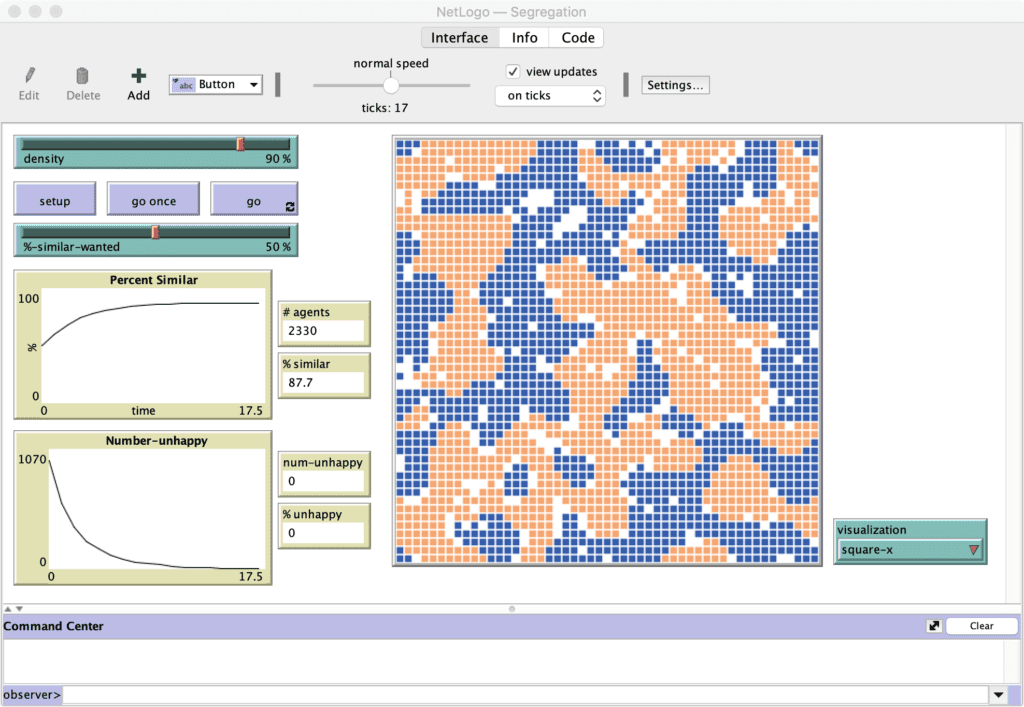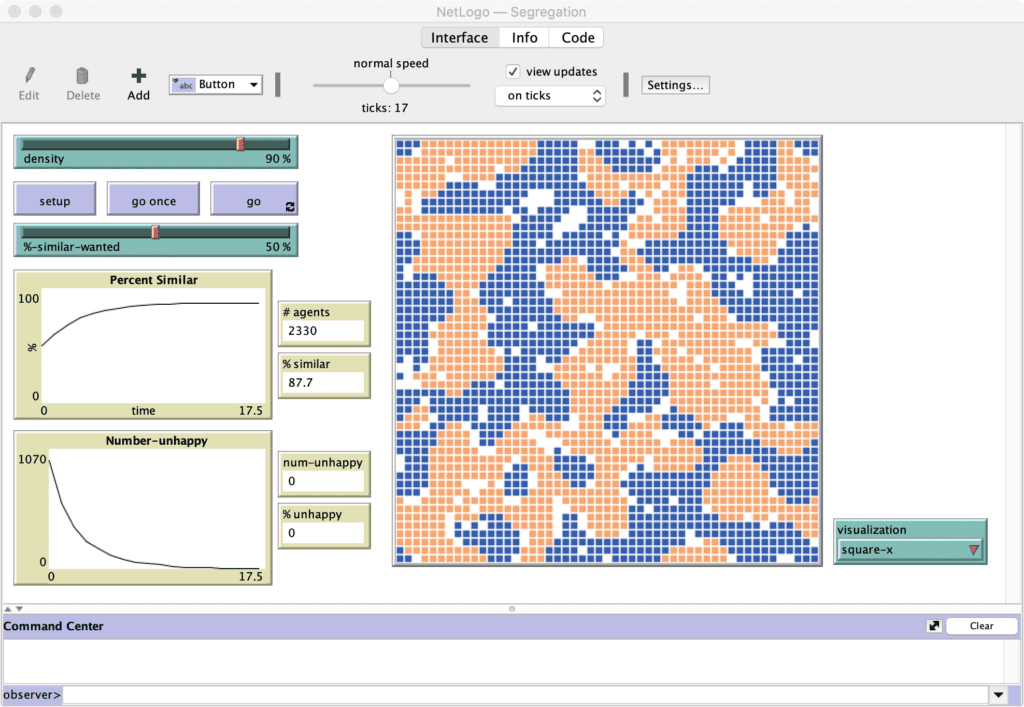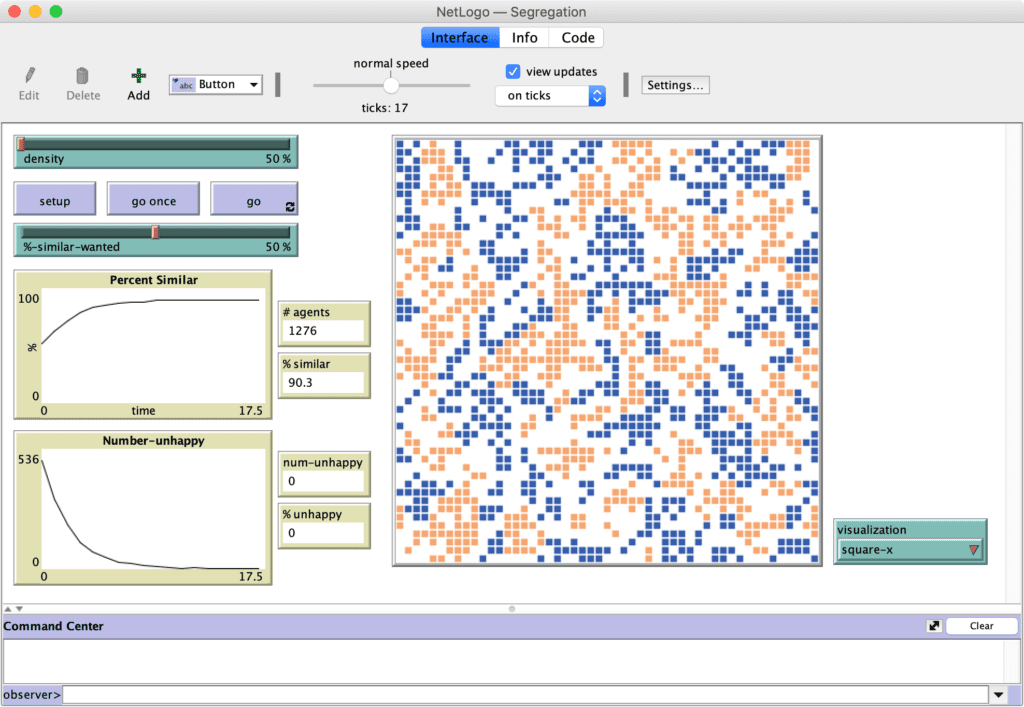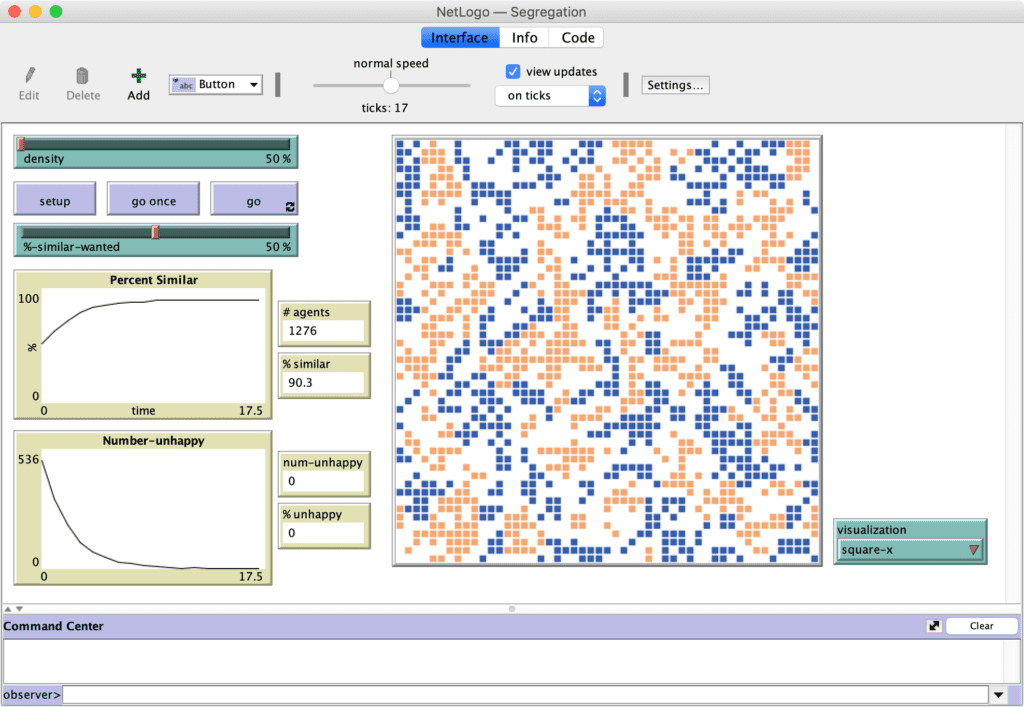This was economist Thomas Schelling’s insight way back in 1969 — just one of many examples of “unknown knowledge” that exists in the world today. His Spatial Segregation Model takes a few simple premises and shows that a set of quite tolerant people, who genuinely prefer to live in a diverse neighborhood in terms of race, income, and other factors, nevertheless end up self-segregating into clusters of like individuals — as follows:
Slight preference for homophily: 30%
We set up a fairly dense environment with a low preference for similarity — people are quite tolerant and are only looking to have 30% of their near neighbors be similar to them:

But when we run the simulation, we end up with an equilibrium state where individuals are surrounded by 75.2% similar neighbors:


If we run the spatial segregation model with a 50% preference for similar neighbors, the outcome is even more stark: the agents achieve equilibrium at a whopping 87.7% similarity:


If we change the density to be quite low (think: implications for less densely populated “flyover” states…), the outcome at equilibrium is even more starkly segregated at 90.3%, with a lot of white space separating many of the nearest neighbors:


These results are, I think, counterintuitive to most of us. We expect our general preferences to lead more linearly to the general outcomes that match. Not so, says the Schelling model. What can other models reveal about the unexpected cultural structures created ultimately by our internal psychological preferences — and what are the “hidden” forces acting to create these surprising outcomes? 🤔
Comments are closed.